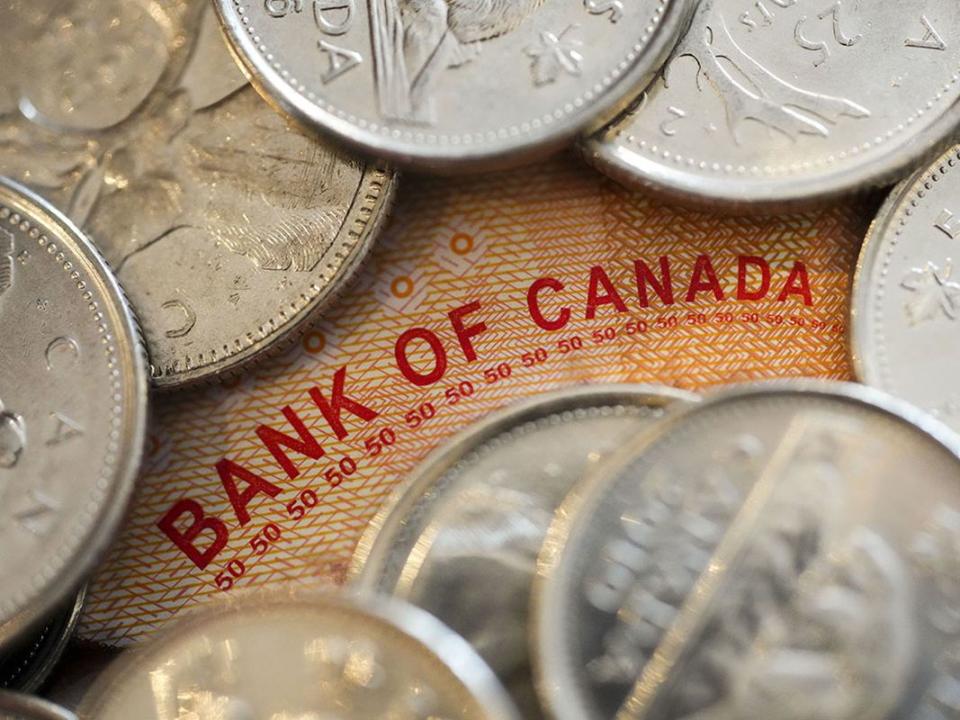Slowing growth could keep Bank of Canada on sidelines

Canada’s economic growth slowed in the second quarter after a strong start to the year, data from Statistics Canada showed Friday.
Gross domestic product grew 0.3 per cent in May, matching economists’ estimates, but preliminary data show it shrank by 0.2 per cent in June, the first contraction this year.
The numbers suggest the economy grew 1 per cent in the second quarter, slower than the Bank of Canada forecast and much weaker than the 3.1 per cent growth seen in the first quarter.
Here is what economists say about the new numbers and how they may affect the Bank of Canada’s next interest rate decision.
Marc Ercolao, TD economist
Today’s reading points to some slowing momentum heading into the summer months. Since April, GDP data has been impacted by a series of transitory shock whose net effects make the data more difficult to interpret. Looking ahead, headline GDP figures may continue to be skewed by the government’s grocery rebate and the effects of the B.C. port strike in July. All said, slowing growth appears to be in the cards for the Canadian economy, and we believe this will be enough for the BoC to remain on hold at its next meeting.
Claire Fan, RBC economist
Canadian GDP remained resilient in Q2. But growth is starting to look weaker by the end of the quarter – wholesale sales posted one of the largest declines in history in June. The resilience in consumer demand we’ve seen to-date is not to be overlooked, adding to sticky inflation pressures. But momentum in services spending also appears to be waning – gross sales at food services and drinking places have been trending at levels below this January for months.
The BoC won’t hesitate to hike interest rates further if necessary, but we maintain the view that the worst is yet to come for households with pressure from near-record high (and still rising) debt service expenses. We expect that will soften spending, push inflation lower, and keep the BoC to the sideline over the second half of this year.
Andrew Grantham, CIBC economist
With today’s data suggesting that growth was a little weaker than the Bank of Canada’s MPR projection in Q2, there is a clear risk that policymakers won’t hike interest rates one more time as we had previously anticipated. However, because the slowdown in growth during Q2 was at least partly driven by supply side disruptions within public admin and the energy sector, we suspect that signs of continued loosening in the labour market and the trend in core inflation will be more important for the Bank as it determines whether to raise rates again or move back onto the sidelines. We will get more information on that front with the labour force survey next week.
Olivia Cross, assistant economist, Capital Economics
Despite the rebound in GDP in May, growth in the second quarter looks set to be weaker than expected. With some of the factors supporting GDP set to unwind, third-quarter growth is also likely to come in lower than the Bank of Canada’s upwardly-revised forecasts. That supports our view that the Bank is probably finished hiking.
Douglas Porter, BMO chief economist
Bottom Line: This is a somewhat disappointing suite of figures, as the estimated 1.2 per cent annualized rise for all of Q2 follows a solid 2.4 per cent gain reported in the U.S. yesterday for the same period. The underperformance is no shock, given that the economy was dealing with the civil servant strike, wildfires, and swings in the auto sector. Breaking it down by the three months in the quarter versus our expectations, April was 1 tick better, May was as expected, and June was 2-3 ticks below. While the June handoff to Q3 is soft, we suspect that that weakness will reverse in the summer, as it was heavily concentrated in the whippy auto sector. The bigger picture is that growth is going to struggle to stay firmly in the positive column in the second half of the year, and we are likely to see more back-and-forth months like May and June resulting in very slow growth overall.
Additional reporting by Bloomberg

 Yahoo Finance
Yahoo Finance 